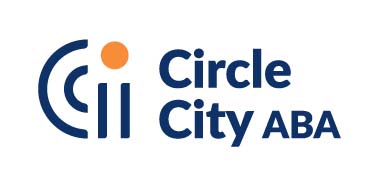
5 Myths Debunked About ABA Therapy
Applied Behavior Analysis (ABA) therapy is a widely recognized and effective treatment for individuals with autism and other developmental disabilities. Despite its proven success, some several myths and misconceptions surround ABA therapy. These myths can create misunderstandings and may prevent families from seeking this beneficial intervention for their loved ones. In this blog post, we aim to debunk five common myths about ABA therapy, providing clarity and insight into the true nature and benefits of this therapeutic approach. Whether you are a parent, caregiver, or simply curious about ABA, this article will help you separate fact from fiction and make informed decisions about the best care for individuals with autism.
MYTH 5. ABA takes place at a table to drill skills.
TRUTH IS: ABA is Everywhere!
If your child loves his favorite chair, ABA can start there. At school? Absolutely! Center-based therapy is highly effective for children with autism who need a controlled environment to develop language, reduce problem behavior, and acquire ready-to-learn skills for future transitions, self-care skills, play, and social skills. Children and adolescents receiving ABA therapy will have access to functional living skills such as toileting, food programs, desensitization, problem-behavior reduction, social skills training, and pre-vocational skills. If a child needs help in the community, ABA works at job placements, restaurants, and retail stores…okay we work on skill acquisition at the movies, parks, and swimming too! Who said ABA couldn’t be fun?
MYTH 4. ABA is only for young children.
TRUTH IS: ABA is effective across all ages, severity levels, and domains.
The Journal of Applied Behavior Analysis is just one resource to find evidence of the effectiveness of ABA across a broad spectrum of individuals. (National Autism Center [NAC], 2015; Wong et al., 2014, 2015)
MYTH 3. It doesn’t matter how often ABA therapy is done. You will get results.
TRUTH IS: ABA needs consistent focus, especially in the beginning, to gain rapport with the child or adolescent and to work intently on building skills across deficit domains.
ABA includes parents and guardians to generalize skills wherever the child needs them. ABA uses the child’s or adolescent’s motivation for preferred items or activities to build and maintain the skills they have worked so hard to acquire. Intermittent ABA will not produce the results for critical targets such as language development, reduction of problem behavior (NAC, 2015), and toilet training. A critical feature of ABA is individualized programming specific to the learner. The duration and intensity of treatment are based upon ongoing assessment and program supervision by a BCBA.
MYTH 2. ABA uses food to bribe children and adolescents to do their work.
TRUTH IS: ABA identifies key motivation for each individual.
Reinforcers are given immediately after a child does something we want to see again, such as tying his shoe with no help. ABA focuses on what a child does right instead of what they do wrong. The environment is set up so the child has the best opportunity to be successful. When the correct response is made, reinforcement of the correct response happens. Reinforcement is based upon the items, activities, or people that mean the most to that person. This is never given for inappropriate behavior, as a bribe might be, but for the behavior we want to see repeatedly. This is where progress is made. Saying “That’s it, Buddy!” with a bright smile and excitement is how a person knows they are on the right track. Sometimes edibles are used but reserved for critical and challenging skills, such as language development and toilet training. Tangible items are faded and transitioned to verbal praise, or even better, the individual finding reinforcement in finishing a task.
MYTH 1. ABA is experimental and not a true science.
TRUTH IS: ABA-Works! Applied Behavior Analysis is an empirically-based science, meaning these methodologies are supported and shown to be effective.
Why is that so important? The scientific evidence for ABA shows more progress for persons with autism than any other treatment. That is a big deal! It holds clinicians accountable to peer reviews and replication of interventions and requires strict ethical compliance for best practices and outcomes.
The Behavior Analysts Certification Board (BACB) is another excellent resource for learning about the requirements for ABA therapy and the ethical guidelines and qualifications required to become a Behavior Analyst. Learn more about the BACB.
Visit Circle City ABA’s website for more information on our services and how we can support you and your child.
Additional References:
- Mruzek, D.W. (2014). ASD intervention: How do we measure effectiveness? Science in Autism Treatment, 11(3), 20-21
- National Autism Center. (2015). Findings and conclusions: National standards project, phase 2. Randolph, MA: Author.
- Wong, C., Odom, S. L., Hume, K. Cox, A. W., Fettig, A., Kucharczyk, S., … Schultz, T. R. (2014). Evidence-based practices for children, youth, and young adults with Autism Spectrum Disorder. Chapel Hill: The University of North Carolina, Frank Porter Graham Child Development Institute, Autism Evidence-Based Practice Review Group.


